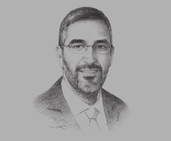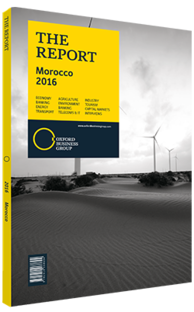Abdelaaziz Omari, Mayor of Casablanca: Interview

Interview: Abdelaaziz Omari
What can be done to tackle the deficit in public transport in Casablanca?
ABDELAAZIZ OMARI: Public transport is critical to the Casablanca’s development. Government incentives to buy and acquire cars, coupled with demographic growth and urban sprawl, have led to increased traffic jams. Currently, the tram offers an alternative that is being developed. We already have 33 km linking the west to the east and, as part of the 2015-20 Casablanca Strategic Development Plan, the second line expected in 2018 will add 17 km from the north to the south. The tender for the operation of the second tramway line will be open to international companies.
The bus network has a specific governance plan that consists of a delegated management contract between the city and M’dina Bus, a private company, and is expected to run until 2019. We are now auditing this company and looking for enhanced management solutions to improve the bus service. The management of the tram and the bus are very different. The tram plan is based on low industrial risk, with investments made by the public and an operator paid to cover the costs. We are currently undertaking studies to see if the same system can be applied to the bus network. That would allow for greater interoperability between public transport and services. For example, we can imagine a single ticket for parking lots, the tram and buses. A study needs to be completed to move forward. Casa Transports will set out the specifications to prepare the post-2019 agenda.
How will you fund the development of transport?
OMARI: We need to distinguish between investments and operations. The investments are made by the state and the local government. The city of Casablanca subsidises the operation part to boost the development of public transport. Almost 40% of the tram ticket is subsidised so that the operational budget is balanced. The city will continue this policy.
To generate revenues, we are thinking of advertising in and naming tram stations. For the naming scheme, there is a pilot project with a Moroccan company, but the competition will be open to international companies as well. Increased interoperability between different modes of transport will boost the number of users from nearly 125,000 users per day today to over 150,000 users per day in the future.
In what ways can the city balance the need for green spaces with existing land constraints?
OMARI: Casablanca accounts for approximately 20% of national GDP and 60% of international trade. Therefore, there is strong demand for land for commercial, residential and industrial activities. We have also seen substantial demographic growth, where the population increased 14% between 2004 and 2013.
There is a programme for green spaces that encompasses various projects in the city centre. One of these consists of planting trees to tackle this deficit of green spaces. For instance, we are planting trees on both sides of the 50-km urban highway that crosses Casablanca. Also, we are working on a green belt along the ring road. The cities around Casablanca – Mohammedia, Beniyakhlef, Mediouna and Bouskoura – will host further green spaces.
As a result, the balance between green spaces and land for construction has to be considered at a regional level because there are a great many industrial, commercial, residential and sport activities that need be developed around the city to help alleviate the land constraints. The creation of 12 regions has given birth to the Casablanca-Settat region, with good synergies between Casablanca (industry and services) and other cities like Settat and El Jadida that have greater agricultural output. So the development plan for the city is in line with that of the region. Our goal is to turn Casablanca into a model city with reduced inequalities between neighbourhoods.
You have reached the limit of premium articles you can view for free.
Choose from the options below to purchase print or digital editions of our Reports. You can also purchase a website subscription giving you unlimited access to all of our Reports online for 12 months.
If you have already purchased this Report or have a website subscription, please login to continue.

